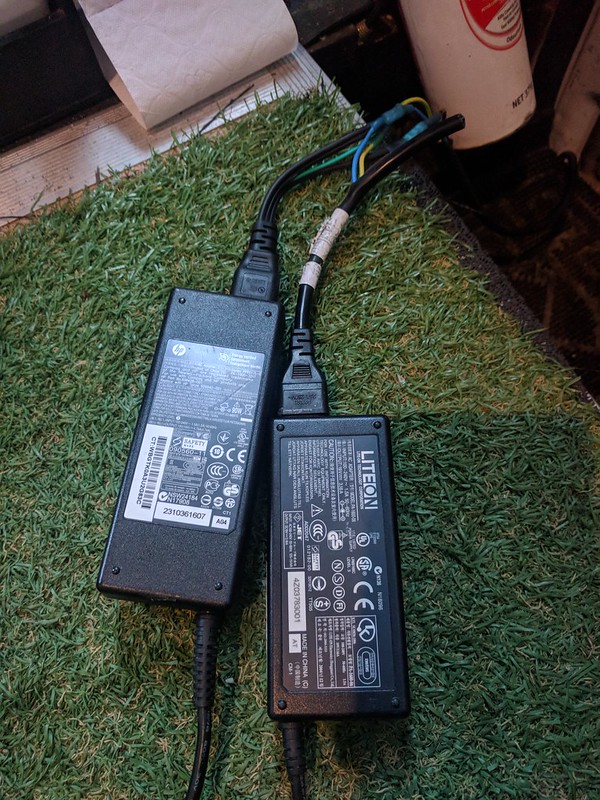In thinking about the "W" or Stator input to the the voltage regulator and the reason for the intelligent regulator needing to know the RPM of the alternator: it is possible that the regulator may limit the alternator output based on RPM in order to ensure adequate fan cooling. The designers may have just come up with an output profile based on fan capacity.
I am inclined to agree. I think the voltage regulation may be directly controlled via analog comparator, but fault detection, and startup control is digital. I would not be surprised if there a thermistor on the board that will throttle output based on heatsink temps.
PS:
Reading through this data sheet
http://www.bosch-motorsport.de/cont...rnator_B3_LIN_Datasheet_51_en_13619552267.pdf
I guess I'm more inclined now to think that the primary use for the stator "W" signal is for the 3000RPM cut-in on this alternator.
Nice clear Ioutput vs RPM plot in there too.
Yeah, definitely resembles the blower flow vs rpm plots I have seen.
If I got this straight, you inserted a diode in the positive side, as described by SmartGauge? That would make me feel better.
http://www.smartgauge.co.uk/alt_mod.html
That's the right way to do it. I'm pretty sure you don't need the second diode which is called a flyback diode. It looks like there's a flyback diode on your circuit board between the two brush connections. You can detect this diode on your removed regulator by using your ohm meter set on diode scale. From brush to brush, you should see a diode drop one way and not the other. Even though the regulator regulates more or less constant current, the voltage switches on and off pwm style. The inductance of the rotor produces a big voltage spike when it gets switched off which the flyback diode suppresses.
*********************************************************
Edit, on second thought if you have the suppression diode in, then keep it in. It does no
harm.
Yes, the diode is on the B+ feed (for both field and regulator). I don't see any issues with the ground side mod, but I am no expert by any means.
I also don't think the flyback diode is necessary, but I had spares, and it can't hurt anything in that configuration. I have seen a few ICs destroyed by inductive voltage spikes, no reason to take that risk.
Is the voltage at the battery bank still increased?
It occurred to me that we have teased this regulator apart enough now that we understand it pretty well. With that knowledge you could make it do a primative form of remote sensing. That is, pick up V+ for the regulator at the battery and thereby compensate for the cable drops. Not sure that will make much difference if your alternator is limited by the RPM you wish to charge at. But it's still something to ponder. How practical it really is - I'm not entirely sure as the entire field current needs to be delivered down the "sense" wire which introduces it's own voltage drops.
With the system as it stands now perhaps with the slight voltage boost your alternator could still be run for a shorter time at an increased RPM than it would have needed to be otherwise. So still an overall improvement.
You could artificially boost up V+ past B+ in order to drive the field coil harder - but i think that might be treading on dangerous ground with the original regulator. There does appear to be brush ony units which would allow you to convert the alternator easily to an external regulator.
Generally I only run up against the alts output limits if the bank is below 75% SOC. Even then its only for about 15 minutes. Below 60% I can max the alt out for a bit longer, maybe more so at the higher voltage.
The biggest limiting reason for the upped voltage is faster absorb. Getting the last 10% into the battery takes less than half the time at 14.4V as it does at 13.9V. The faster charging below 90% SOC is just a bonus.
I thought about remote sensing. The issue is that my Aux bank charges through a VSR relay (blue sea ML-ACR). If it became disconnected during operation the alt would stop charging. If the sense wires resistance got to high, a dangerously high voltage spike could occur. Bad mojo. Failsafes could be rigged up, but at that point I might as well just solder in an external regulator!
If only the external regulators weren't so expensive... The other issue is that an external regulator really needs RPM/output limits and or temperature feedback. After your research, I know believe that these small case alternators can only produce 200A (or 150A etc) from such a small package because they adaptively regulate output to stay within the cooling limits.

